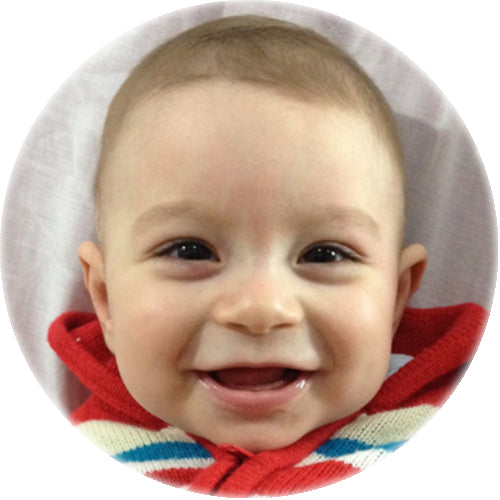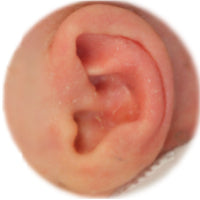Which problems will EarBuddies® correct?
EarBuddies splints can correct most problems caused by abnormal or missing folds of a baby's ear (Stick-Out Ear, Stahl's Bar, Cup Ear, Cryptotia, Lop Ear, Rim Kink, Stick-Out Lobe and a Folded-Over Helical Rim). As a general guide, if you can temporarily correct the problem by gently bending the misshapen ear or by pushing out a kink with your fingers, then EarBuddies should be able to give a permanent correction. However, the splints cannot replace missing tissue or guarantee success in all cases.
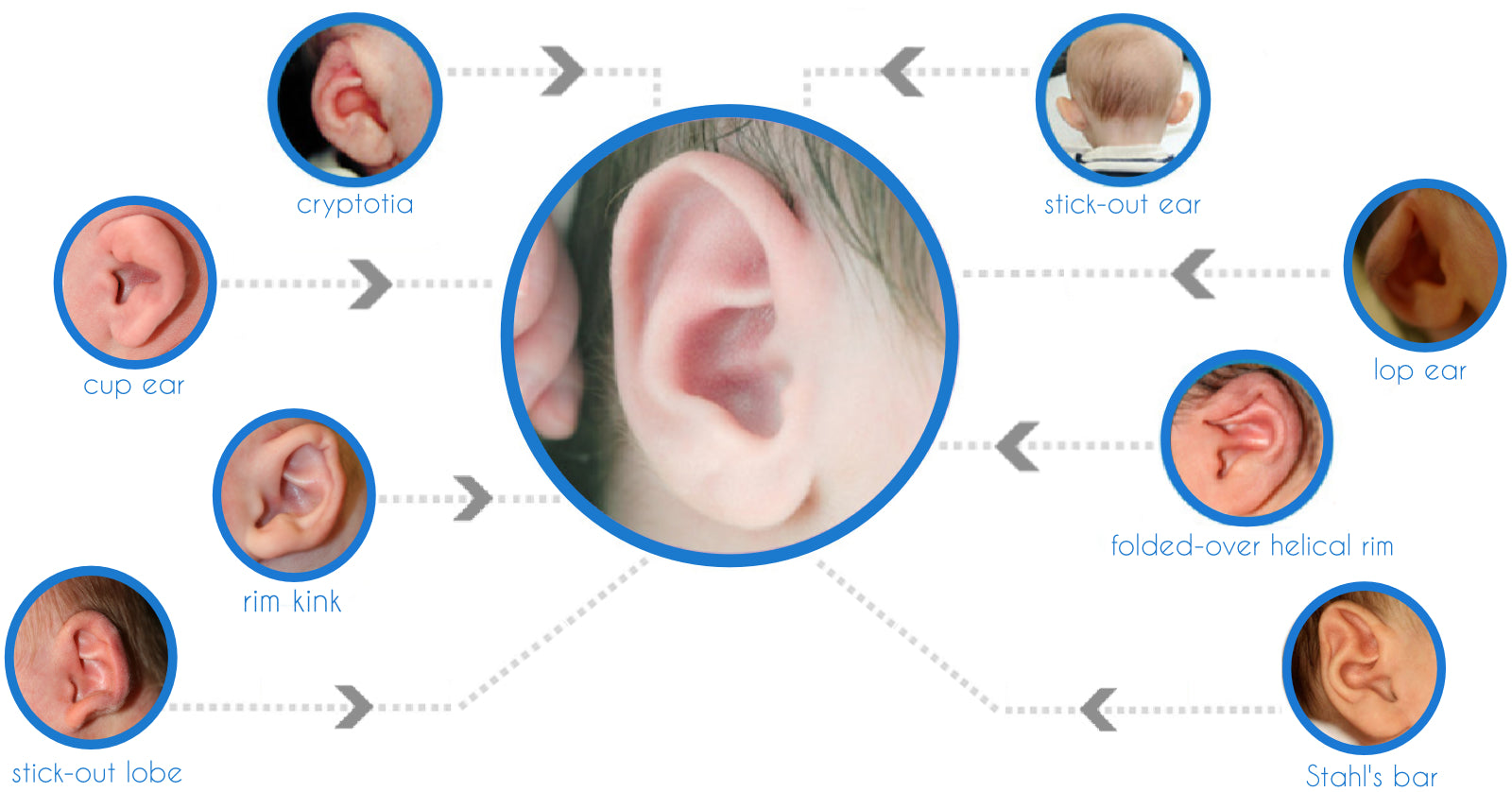
Click below to jump to a specific ear condition.
Stick-Out Ears
Also known as 'Dumbo Ears', 'FA Cup Ears', 'Bat Ears', 'Wing-nut Ears' and prominent ears.
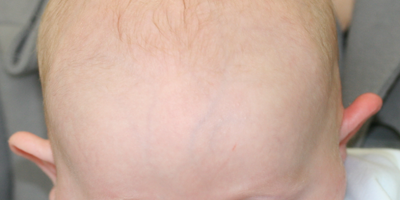

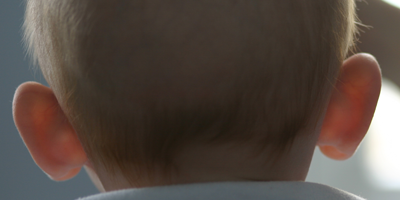
Two-thirds of prominent ears are obvious soon after birth, while the rest become obvious as the head shape changes and the ear cartilage hardens during early life. It is in this period that surgery can be avoided with splintage. EarBuddies splints fix the cause of stick-out ears by remoulding the soft cartilage and, when it hardens, the correct position and shape becomes permanent.

The folds in the cartilage framework of a normal ear make it lie flat against the side of the head.
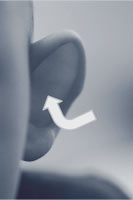
Two-thirds of prominent ears stick-out because the antehelical fold (antihelix) is not properly developed.
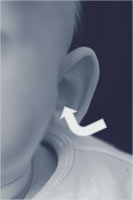
The rest because the conchal bowl is very deep. (abnormal muscle attachment may play a part)
Stick-Out Ears run in the family – do I need any special advice?
- We recommend immediate splintage at birth for two weeks whether or not the child has any evidence of the problem.
- About 30% of children who develop Stick-Out Ears look normal for the first three months, and by this time, the splints must be worn for longer to take effect.
- The success of EarBuddies Splints on children from families with a history of Stick-Out Ears may partly be because parents have suffered teasing themselves in the past, and are particularly dedicated to splintage.
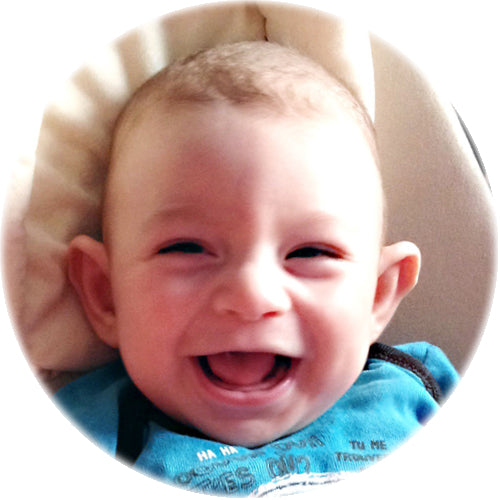
before EarBuddies
Recent Stick-Out Ear Results
Stahl's Bar
Also known as a Stahl's Ear, third crus or Spock Ear.
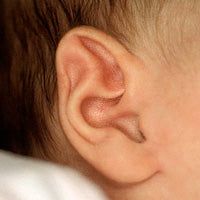
some are pointed

some are more rounded
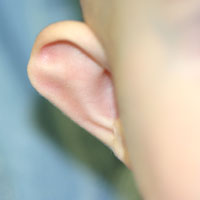
Stahl's Bars can also stick out
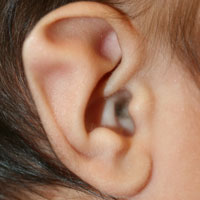
difficult to fix surgically
A Stahl's bar is an unusual ear deformity which can make the ear look pointed. EarBuddies splints can correct these deformities easily in babies, whereas they are difficult to correct by later surgery, even in expert hands.

before EarBuddies
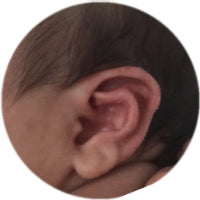
2 weeks later

before EarBuddies

after EarBuddies
Recent Stahl's Bar Results
Cup Ear
In a cup ear, the rim (helical rim or helix) is thick and constricted, that is, it seems too tight and inflexible for the ear, so that it looks cup-shaped, and often also sticks out.
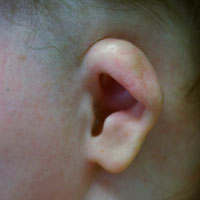
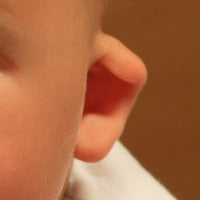
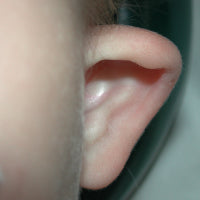

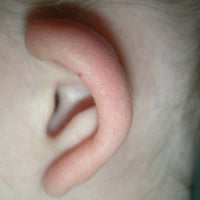
- It is usually difficult to flatten a cup ear against the side of the head because the rim will not "give" enough.
- Although EarBuddies splints may assist, surgery may still be required to release the rim constriction.
- An early fit, particularly if undertaken by an expert, can stretch the constricted tissues and increase the chance of correction.
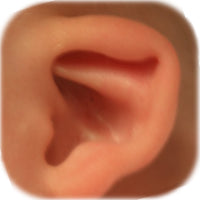
before EarBuddies
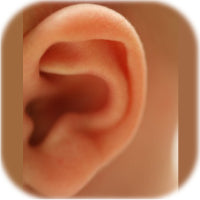
after EarBuddies
Cup Ear Results
Cryptotia
Cryptotia means hidden ear (in Latin ‘crypt’ means hidden, and ‘otia’ means ear). In this condition the lower two-thirds of an ear looks normal and the upper part seems stuck to the side of the head. When the top of the ear is gently pulled away from the side of the head, the upper pole cartilage becomes evident, having been hidden beneath scalp skin.
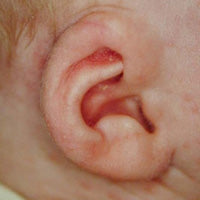
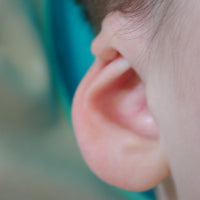
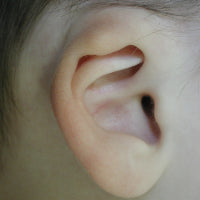
- To attempt an early, non-surgical correction, EarBuddies splints should be applied as soon as possible after birth to create the upper sulcus or post-auricular groove (the gap between the top of the ear and the side of the head).
- After gently pulling the top of the ear from the side of the head, fix the splint into the groove which appears above it.
- Without successful Early Ear Correction™ using EarBuddies, later surgical treatment requires the insertion of a skin graft or local flap to release the tethered portion of the ear.

before EarBuddies
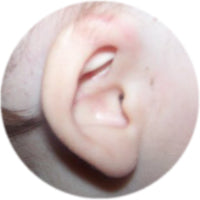
after EarBuddies
Cryptotia Results
Lop Ear
Lop ear is a rare deformity in which the upper pole of the ear flops over. Because the upper pole has folded downwards, the rim loses its curved shape and appears flattened. The upper pole often sticks out from the side of the head, and the ear may appear square when viewed from the side.
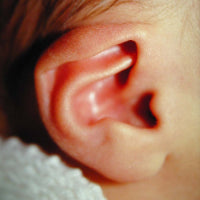
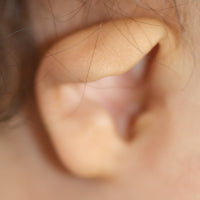

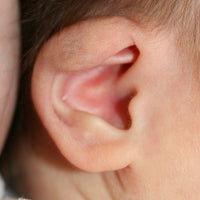
- Lop ear is a very difficult condition to correct surgically and it is therefore especially important to restore the normal curve of the arch early using a splint.
- This makes the ear both rounder, and slightly taller, giving a more 'normal' appearance. If only one ear is lopped, successful splintage of the ear with the deformity should create a good match for the other side.
- If a lop ear has not recovered a normal shape within a few hours of birth, it will require splintage.
- EarBuddies splints can successfully correct lop ears.
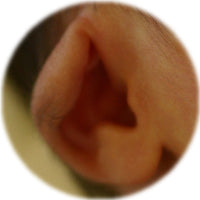
before EarBuddies
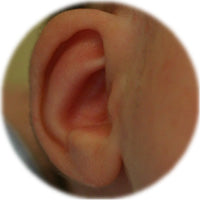
after EarBuddies
Lop Ear Results
Rim Kink
Some ears have a kink in the helical rim and in a few the whole ear appears collapsed vertically to give an ear of reduced height. A pronounced kink may present as a notch in the normal round arch of the helical rim.


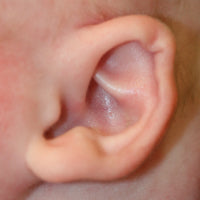
- These kinks often respond well to splintage.
- A splint with a natural arch shape is inserted into the scaphal hollow to push out the kink and restore a natural curve to the rim.
- This is particularly useful as surgical correction of these kinks in later life is difficult.
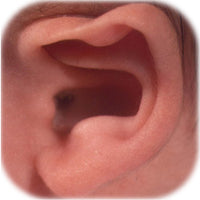
before EarBuddies
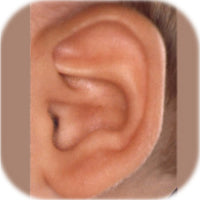
after EarBuddies
Rim Kink Results
Folded-Over Helical Rim
Whilst the outer border of the rim often retains its roundness, the helical rim folds over sharply and obscures the scaphal hollow. This often creates a notch on the inner border of the helical rim and it is this which causes concern in later years; children are teased about their 'pointy' ears whereas it is in fact the folding-over of the helical rim that creates a sharp angle, as shown below. In some ears where the rim folds over, there is an indentation which looks as though a thumb print has been left in the rim (as in the picture in the centre below).
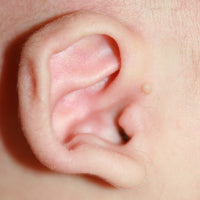

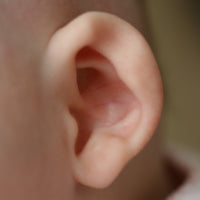
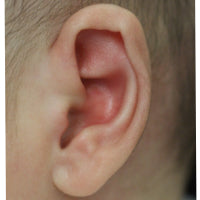
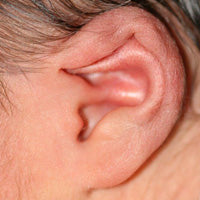
- Where there is a recess between the folded-over rim and the scaphal hollow, the splint can be pushed easily into it. As the correction progresses and the cartilage hardens, the splint can be used to lift the rim and it will begin to support itself.
- Sometimes the folded-over rim is stuck to the scaphal hollow with no skin between. Splintage is then more difficult and a complete return to normal may not be possible, but in most cases a significant improvement is achieved.
- This particular deformity is very difficult to fix surgically, and at present, few surgeons in the world can fix it satisfactorily. In most cases, splintage is much more likely to achieve a better result, and also avoids the expense and anaesthesia involved in surgery.
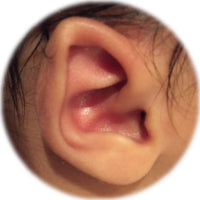
before EarBuddies
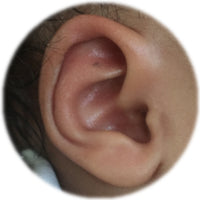
after EarBuddies
Folded-Over Helical Rim Results
Stick-Out Lobe
The ear lobe does not usually contain cartilage and simply hangs from the lower border of the cartilage framework of the ear - if the lobe sticks out, it is usually because the lower edge of the cartilage framework sticks out, and carries the lobe with it.


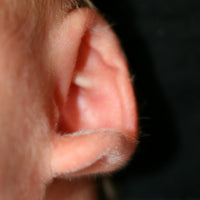
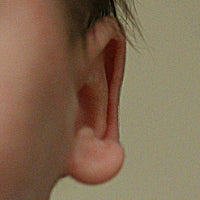
- An EarBuddies Splint can be fitted to reshape the protruding section of cartilage that causes the lobe to project outwards, bringing it closer to the side of the head.
- Superwide tape is used to maintain the position of the corrected lobe against the head.
- You may need to persevere for several months, but this is a difficult problem to fix surgically, and so splinting can be really worthwhile.
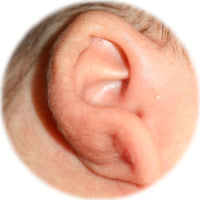
before EarBuddies

after 2 weeks
Stick-Out Lobe Results
Conchal Crus
A normal ear has a shallow conchal bowl surrounded by the antihelix. A conchal crus is a rare deformity in which a bar of cartilage crosses the conchal bowl from just above the tragus to the antihelix. In some instances, the natural recess of the conchal bowl is almost entirely lost because cartilage in the floor of the bowl bulges outwards. A conchal crus can block the entrance to the the ear canal, and in later life, retention of in-ear headphones can be difficult.
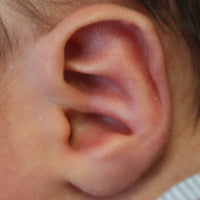
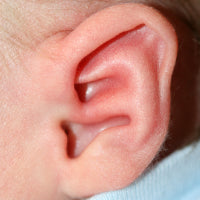
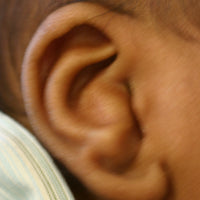
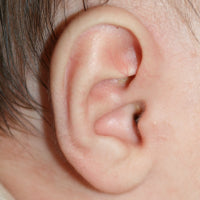
- EarBuddies Splints can be used to restore the depth of the conchal bowl. Surgical correction in later life is possible, but difficult, and it is therefore important to tackle this deformity early.
- To correct this deformity, the splint can be folded into a heart-shape and placed into the conchal bowl to push out the crus. Expert advice is strongly recommended as fitting is more difficult than for other conditions.
- The cartilage of the crus often seems very firm, but gentle pressure over a few days can give surprisingly good results.
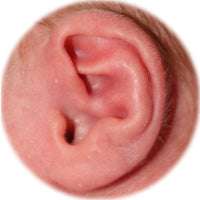
before EarBuddies
Conchal Crus Results
Large Ears (Macrotia)
If your baby's ears are perfectly formed, folded and shaped, and do not stick out, but are simply large, EarBuddies cannot reduce their size. In this case it would be best to wait until early adulthood before considering any action. Click here for more information on surgery to treat Macrotia.
EarBuddies can reduce the vertical ear height in some circumstances, for example, if the ear lacks a rim, and particularly where a Stahl's Bar is also present. For such an ear, you would place the splint a little way in from the uppermost edges of the ear, and then roll the edge over the splint so that the cartilage will harden in this shape to permanently recreate a rim, and reduce the vertical height of the ear by a few millimetres.
Small Ear (Microtia)
Microtia, which literally means small ear (micro = small, otia = ear), is a rare deformity in which the ear fails to form fully. This condition presents in a wide variety of ways, from a tiny flap of tissue to an underdeveloped ear with some identifiable cartilage structures.
EarBuddies cannot treat microtia, but in instances where there are identifiable cartilage structures present, splintage may help to improve the appearance until surgery can be considered.
Click here to see the stories of parents who have successfully treated these conditions, and avoided surgery later in life.

